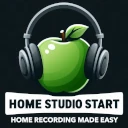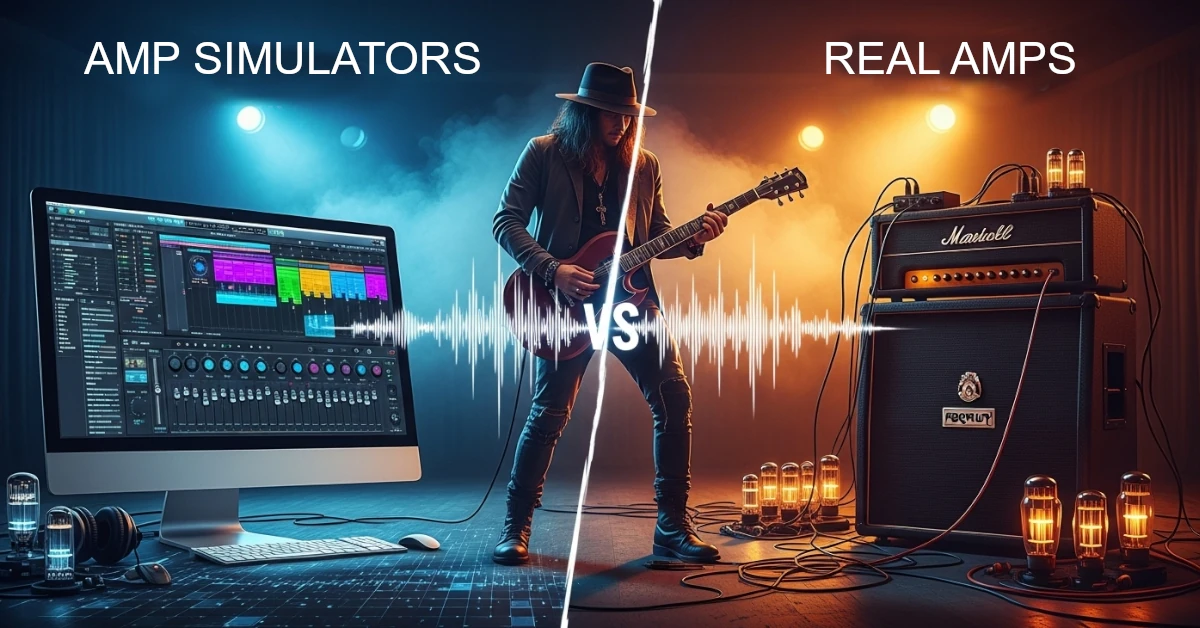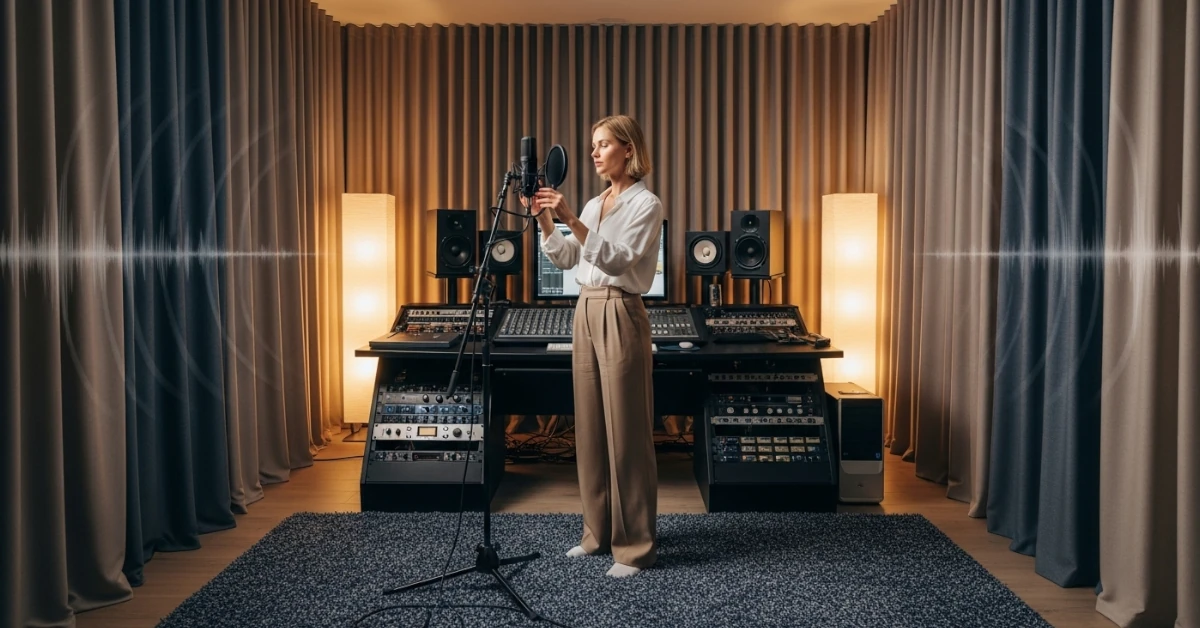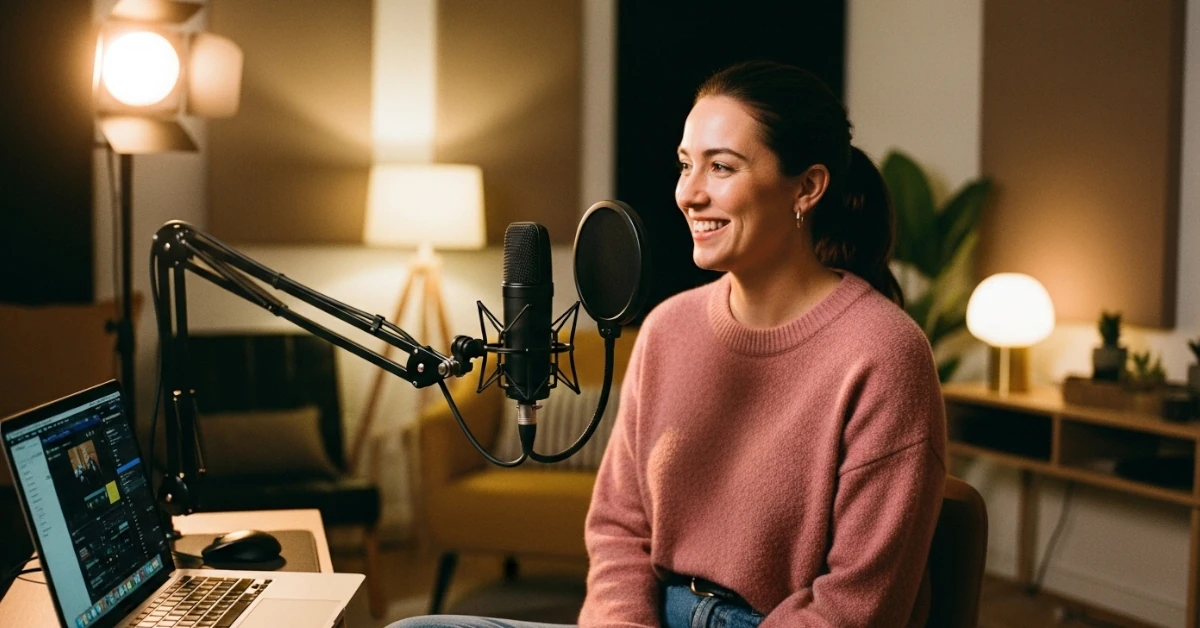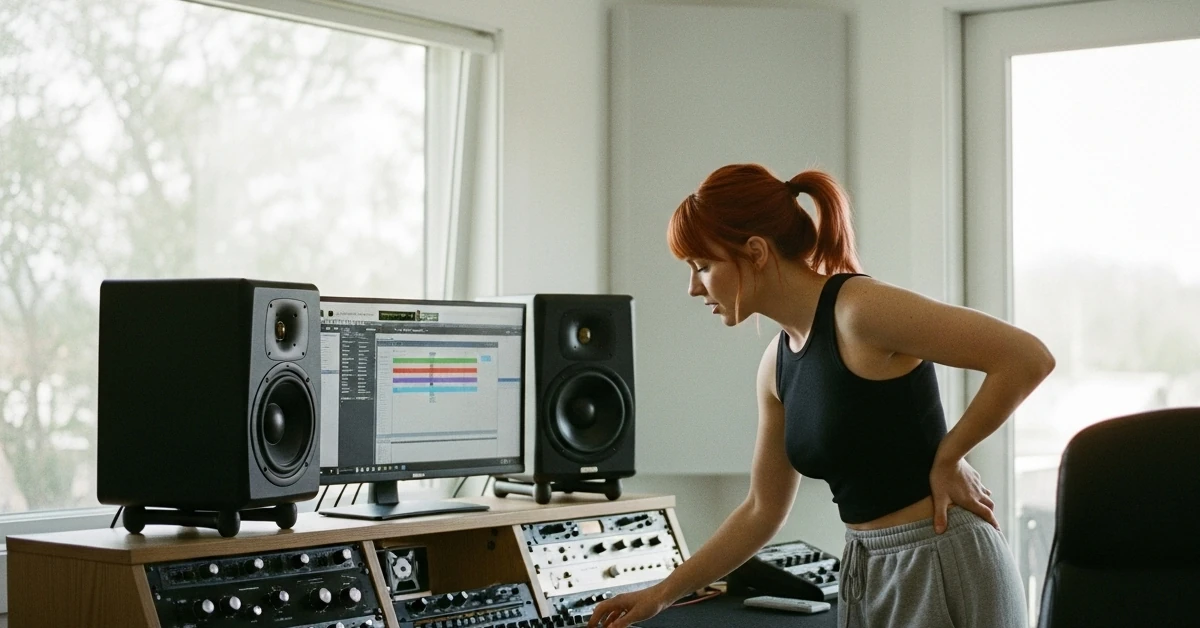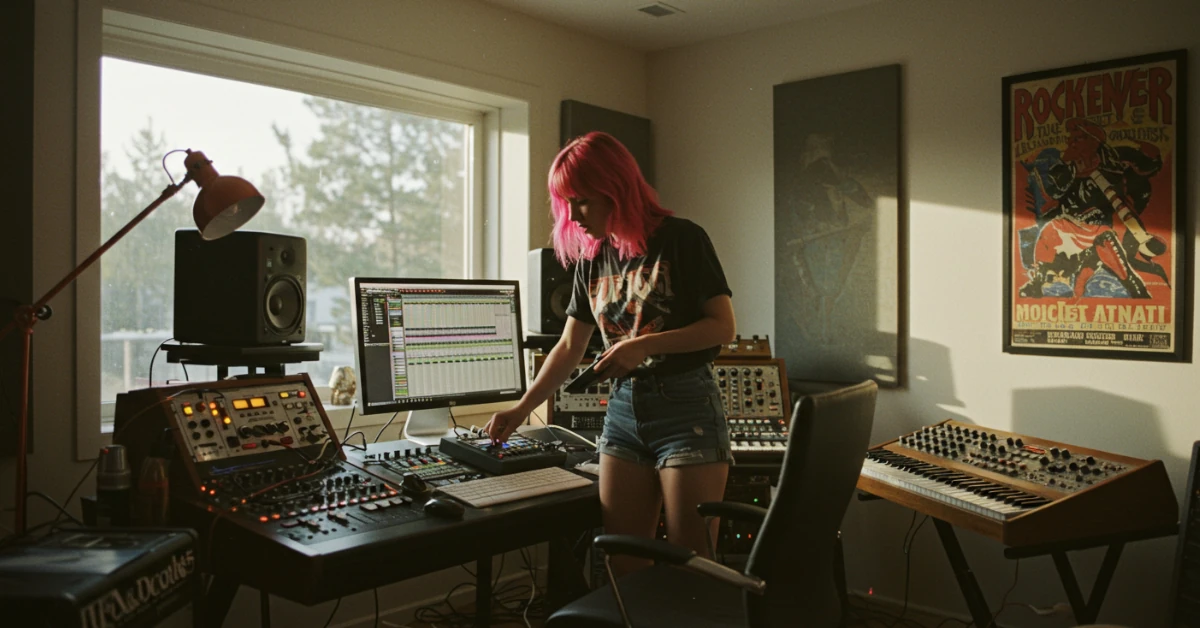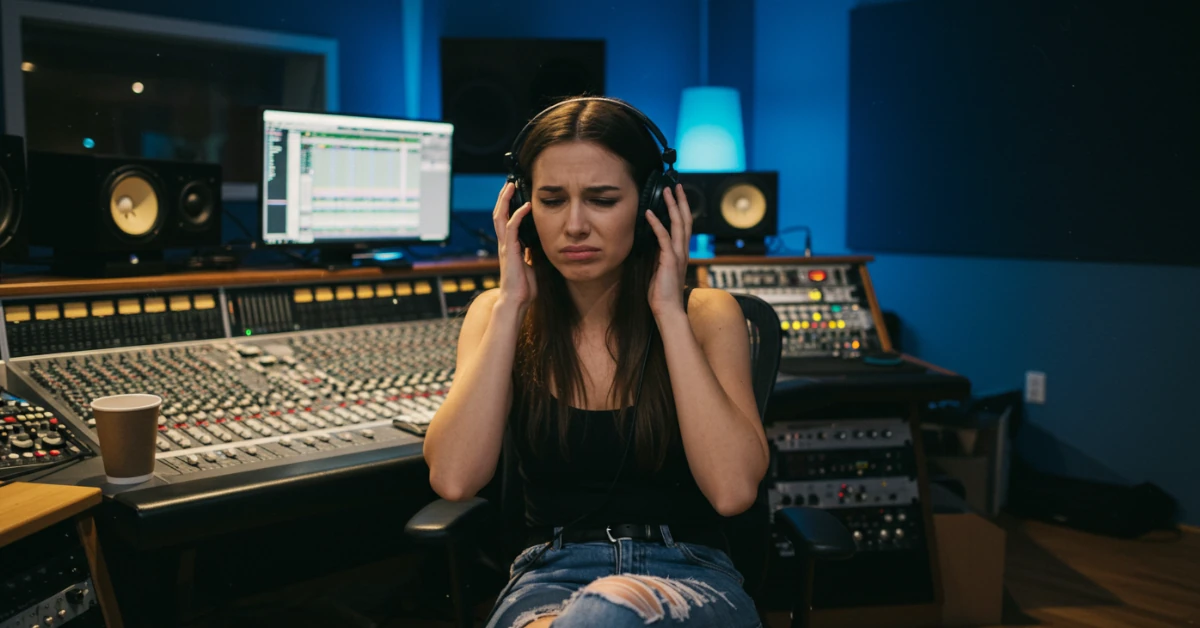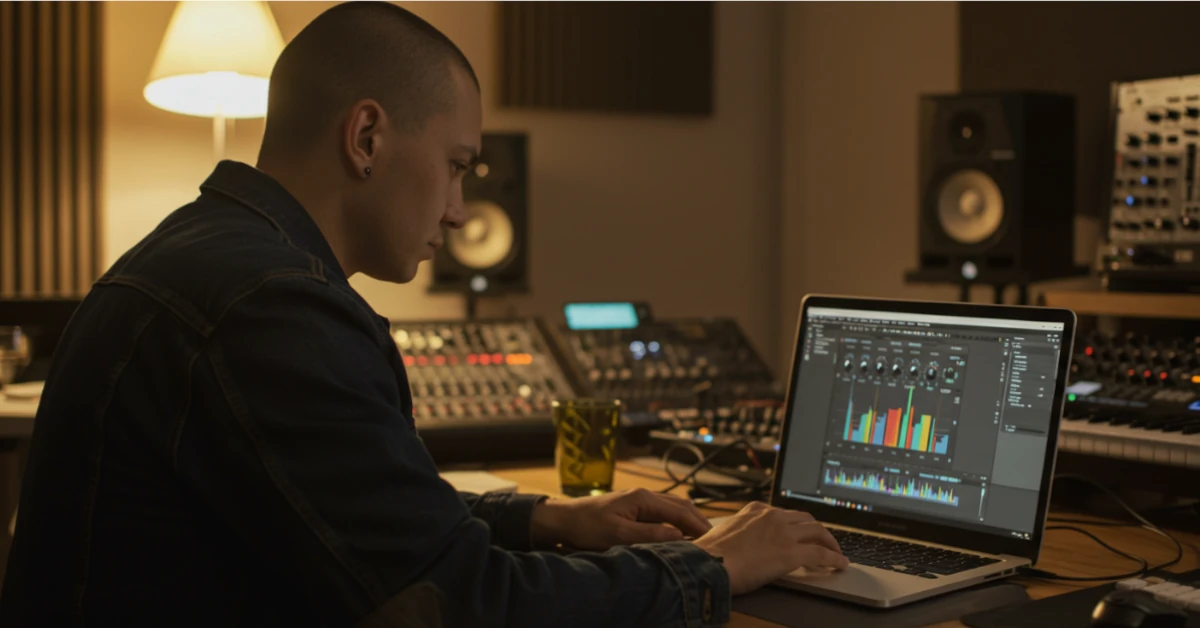Struggling to decide between the convenience of amp sims and the raw power of real amps? You’re not alone! This article breaks down the ultimate amp showdown to help you choose the best tool for your sound. First, we’ll explore the pros and cons of amp sims for today’s guitarists, highlighting their flexibility and cost-effectiveness. Then, we’ll dive into the world of real amps, discussing the unique tone, feel, and live experience they offer. Next up, we’ll put them head-to-head with a sound comparison, including audio examples to showcase the nuances. Finally, we’ll provide practical guidance on when to use amp sims vs. real amps, helping you make the right choice for any situation.
Beyond Decoration: Using Curtains & Rugs for Effective Sound Absorption
Tired of your home studio sounding like a tin can? You don’t always need expensive acoustic treatment to make a real difference. This article explores how strategically using curtains and rugs can significantly improve your sound. We’ll start with the science of sound absorption, explaining how these everyday items trap sound waves and reduce unwanted reflections. Next, we’ll dive into choosing the right curtains, focusing on fabrics, thickness, and linings that maximize sound dampening. Then, we’ll move onto selecting rugs for acoustic control, discussing the importance of material, pile height, and strategic placement. Finally, we’ll go beyond the basics, showing you how to optimize the placement of your curtains and rugs for maximum sound absorption and a more professional-sounding space.
How to Record a Podcast From Home: A Complete Guide
So, you’ve got something to say and you’re itching to start a podcast from the comfort of your own home? Fantastic! Podcasting is an amazing way to connect with an audience, share your passions, and build a community. In this complete guide, we’ll walk you through every step of the process, from setting up your home studio to getting your voice heard around the world.
Here’s a sneak peek of what we’ll cover:
- Essential Equipment: We’ll break down the must-have gear, from microphones and headphones to recording software, and show you how to get started without breaking the bank.
- Setting Up Your Home Recording Studio: Discover how to transform a spare room (or even a closet!) into a sound-optimized space that minimizes echo and background noise.
- Recording and Editing: Learn the techniques for capturing clear audio, editing out mistakes, and polishing your episodes for a professional sound.
- Publishing and Promoting: We’ll guide you through choosing a hosting platform, submitting your podcast to major directories, and promoting your show to attract listeners.
Best Studio Monitors Under $200: Your Guide to Affordable Audio
Dreaming of pro-level sound without emptying your wallet? Welcome to the world of budget studio monitors! This guide dives into finding the Best Studio Monitors Under $200, proving that accurate audio is within reach. First, we’ll explore why choosing monitors in this price range is a smart move, highlighting the advantages of a flatter frequency response for better mixing decisions. Then, we’ll review the top contenders in the budget monitor market, pinpointing the models that offer the best balance of clarity and value. Next, we’ll break down the key factors to consider when buying, such as size and connectivity, to help you choose the right monitors for your specific setup. Finally, we will cover setting up and optimizing your budget studio monitors to provide the best possible sound, even on a budget.
Passive vs. Active Studio Monitors: Which is Right for You?
Choosing the right studio monitors can feel like navigating a minefield, especially when you’re bombarded with terms like ‘active’ and ‘passive.’ But fear not! This guide will break down the ‘Passive vs. Active Studio Monitors’ debate, making the decision crystal clear.
First, we’ll explore active studio monitors, the all-in-one solutions with built-in amplifiers, perfect for streamlined setups.
Next, we’ll dive into passive studio monitors, which require a separate amplifier but offer greater flexibility and customization.
Then, we will compare active vs. passive studio monitors, highlighting key differences in cost, convenience, and potential upgrades.
Finally, we’ll guide you through choosing the right monitor for your studio, considering your room size, budget, and workflow. By the end, you’ll know exactly which type is the perfect fit for your sound!
Top 5 Audio Interfaces for Podcasting: Budget to Professional
Want to transform your podcast from sounding ‘meh’ to ‘WOW!’? It all starts with the unsung hero of audio quality: the audio interface. This guide will navigate you through the essential aspects of choosing the perfect interface, tailored to your podcasting needs and budget.
- Understanding Audio Interfaces for Podcasting: We’ll demystify what an audio interface is, its crucial role in podcasting, and key features to look for, whether you’re a solo podcaster or running a multi-guest show.
- Budget-Friendly Audio Interfaces for Podcasting: Discover that excellent audio quality doesn’t require emptying your wallet. We’ll explore affordable options that deliver impressive performance for beginners and those on a tight budget.
- Mid-Range Audio Interfaces: Stepping Up Your Podcast Quality: Ready to take your podcast to the next level? We’ll delve into mid-range interfaces with enhanced features and improved audio fidelity, setting you apart from the competition.
- Professional-Grade Audio Interfaces for Podcasting: The Ultimate Investment: For podcasters who demand the best, we’ll showcase professional-grade interfaces offering pristine audio, advanced routing options, and exceptional build quality.
Audio Interface Driver Issues? Identify, Diagnose, and Resolve Them Now!
Are audio interface driver issues disrupting your creative flow? This guide will equip you with the knowledge to identify, diagnose, and resolve these problems, ensuring a smooth and efficient music production experience.
First, we’ll delve into identifying common audio interface driver issues, such as crackling sounds, recognition problems, and compatibility conflicts.
Next, we’ll provide a step-by-step guide to diagnosing audio interface driver problems, covering how to isolate issues, check device recognition, and verify driver versions.
Then, we’ll explore practical solutions for troubleshooting audio interface driver errors, including resolving driver conflicts, updating firmware, and ensuring sufficient USB power.
Finally, we’ll cover best practices and maintenance tips for preventing audio interface driver issues in the first place, emphasizing the importance of regular updates, compatibility checks, and system maintenance. Let’s dive in and conquer those driver demons!
Long Session Survival Guide: Preventing Ear Fatigue
Mixing for extended periods? Ear fatigue is a real concern, and this guide is your survival kit! We’ll start by Understanding Ear Fatigue: Causes and Symptoms, diving into how prolonged mixing sessions can wreak havoc on your ears, leading to muffled hearing and poor mixing decisions. Then, we’ll cover practical strategies for Avoiding Ear Fatigue in Long Sessions, emphasizing the importance of breaks, volume control, and mindful listening.
Next up is Optimizing Your Listening Environment and Gear, where we’ll explore how room acoustics, monitor placement, and headphone choice significantly impact ear fatigue.
We’ll also discuss Smart Listening Habits: Breaks, Volume, and EQ, providing actionable tips for incorporating regular breaks, setting appropriate listening levels, and using EQ effectively.
Finally, we’ll delve into Protective Measures and When to Seek Help, including the use of musician’s earplugs, lifestyle adjustments, and recognizing when it’s time to consult a professional.
Get ready to protect your ears and enhance your mixing stamina!
Top 10 Free Audio Plugins That Are Actually Worth Downloading
In the world of audio production, the price tag doesn’t always dictate quality. This blog post is your guide to the ‘Top 10 Free Audio Plugins That Are Actually Worth Downloading,’ saving you time and hard drive space! We’ll explore a curated selection of free plugins that can seriously elevate your music production game. First, we’ll dive into essential mixing plugins, featuring dynamic EQs, mastering-grade compressors, lush reverbs, and classic delays. Then, we will cover plugins that allow you to master your tracks without spending a dime. Next up are creative and unique audio effects to spice up your tracks, from glitchy delays to transient shapers and unusual modulation tools. Lastly, we’ll explore essential free synth and instrument plugins, providing you with versatile synths, realistic acoustic instruments, and vintage organ sounds.
Get ready to expand your sonic palette without emptying your wallet!
Blockchain for Musicians: Revolutionizing Music Ownership and Royalties
The music industry is on the cusp of a revolution, and blockchain technology is leading the charge! This article explores how blockchain is empowering musicians and reshaping the landscape of music ownership and royalties. First, we’ll dive into how blockchain enables a new era of ownership, giving artists direct control over their music and earnings, bypassing traditional gatekeepers. Next, we’ll demystify how blockchain can revolutionize music royalties, ensuring fair and transparent compensation for every play. From there, we’ll explore exciting use cases of blockchain in the music industry, from direct fan engagement to fractional ownership of music rights. Finally, we’ll provide a practical guide on getting started with blockchain, highlighting the tools and resources available for musicians to navigate this exciting new frontier.
Get ready to unlock the potential of blockchain and transform your music career!
